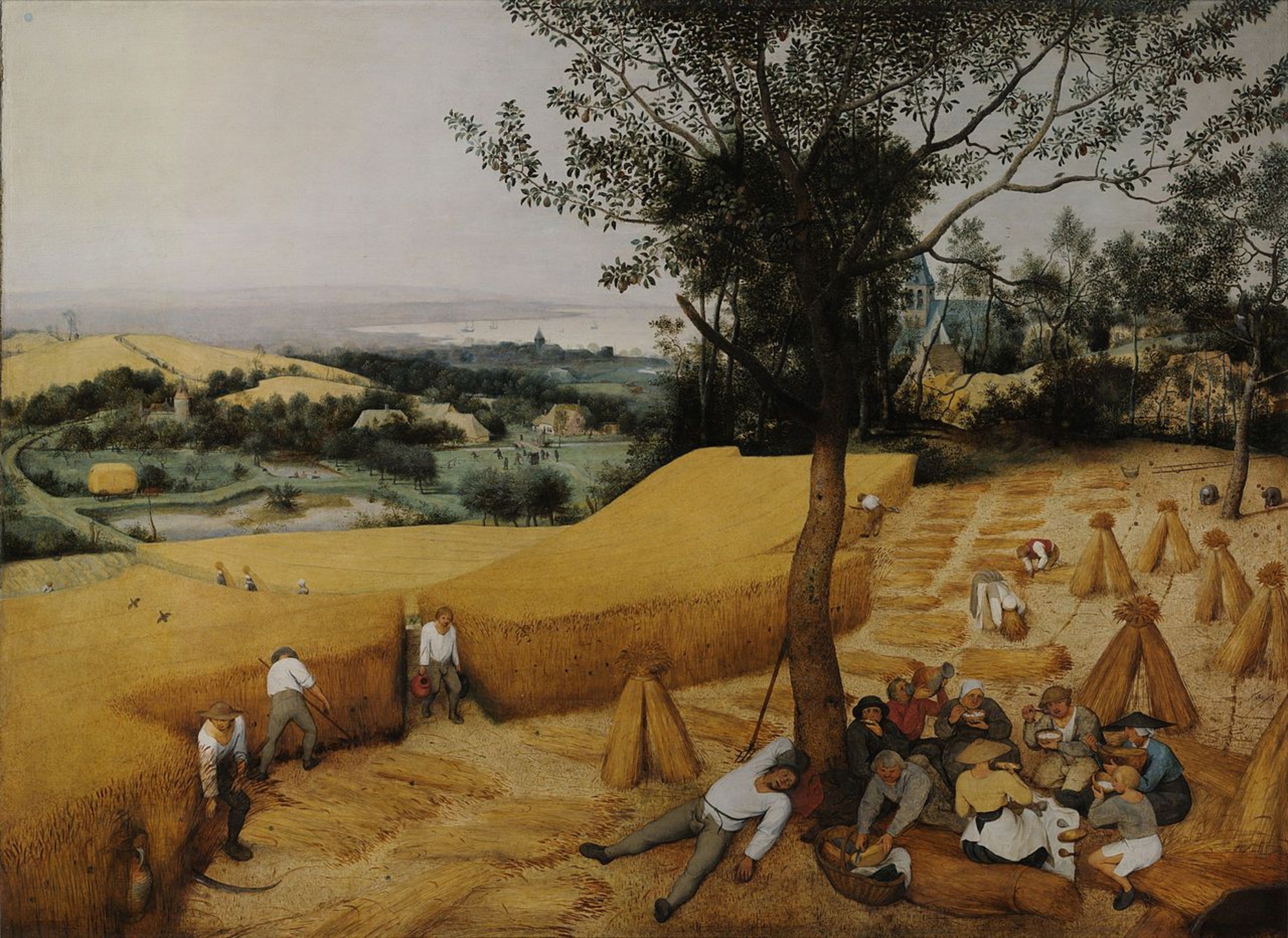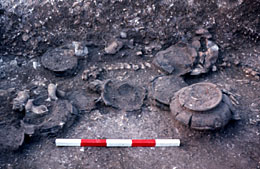- Home
- Discoveries
- Gallic and Gallo-Roman sanctuaries
- The necropoli at Tartigny (Oise)
Discovery of the necropolis. The grain is greener over the tombs, funerary enclosures, and postholes. Tartigny (Oise).
Discovery of the necropolis. The grain is greener over the tombs, funerary enclosures, and postholes. Tartigny (Oise).
The Gallic necropolis at Tartigny was discovered by aerial prospecting during a drought in June 1976 (Agache 1978, fig. 33) and was excavated in late summer 1983 (Massy et alii 1986, pp. 13-81).
The excavated portion included four quadrangular moated enclosures:
A first large ditch 18.7 meters on a site enclosed a tomb that had been sacked by grave robbers, in which were found about ten urns and a small bronze object. A second enclosure, slightly trapezoidal in shape, abuts the first enclosure to the west.
At its center was a cremation grave, contained within a quadrangular ditch 2.8 X 2.95 meters. Nine offering vessels were placed to the north, as well as a pair of tweezers found at the base of another vessel. Two small quadrangular ditches 6.2 meters on a side, with no grave, are set on either side of the two main enclosures. Three pit graves on the outside of the enclosures were studied. These were small cremation graves that contained a number of vessels and metallic material. Three of the graves were surrounded by four post holes, which can be partially made out in the aerial photograph. They must have supported structures that we assume were wooden funeral houses. One could think that these edicules — which were sometimes much more complex, erected over the graves of important figures who became "heroes" — were perhaps the source for native sanctuaries.
Excavation of a cremation grave. Photo: Georges Pierre Woimant. Tartigny (Oise).
A wealth of archaeological material found in a Gallic cremation grave. Photo: Mont Beuvray European Archaeological Center. Tartigny (Oise).
The metallic material is remarkable: metallic pieces in iron adorn a wooden pail with handle, hooping, hook, and hinge; three forks, six knives, two knife-razor-pincers, Weapons are absent from the funerary ritual, although they are much in evidence in sanctuaries in the same region, such as at Gournay-sur-Aronde. All five graves at Tartigny date from the middle phase of the Gallic period, the so-called La Tène II. Specialists think that the individuals cremated in the sector that was excavated belonged to one or more Bellovaci. aristocratic families. There is every indication that here, at Tartigny, certain rich graves could be those of Druids.




